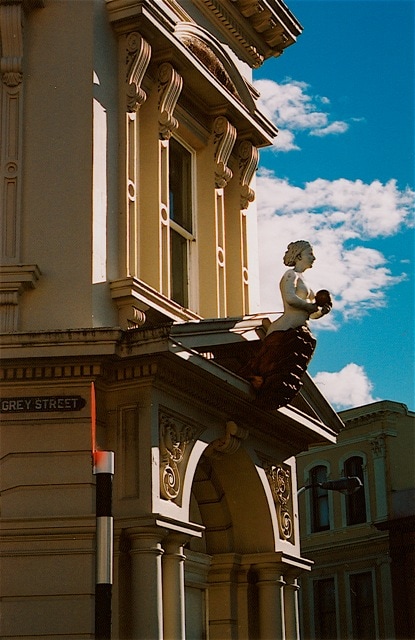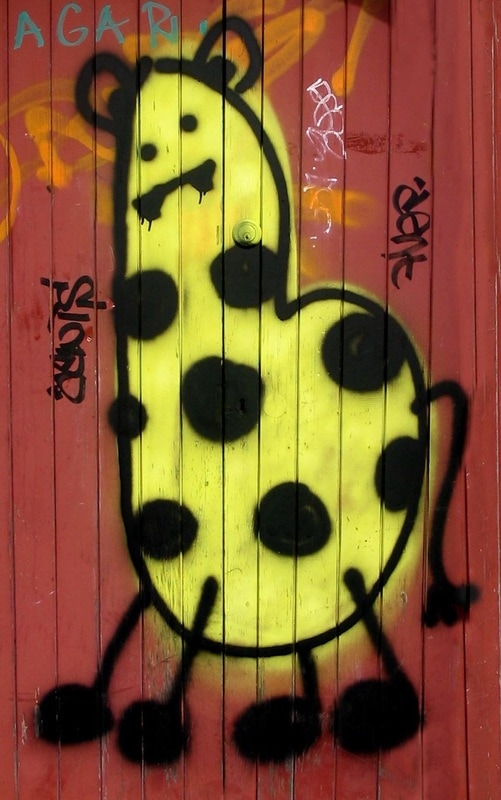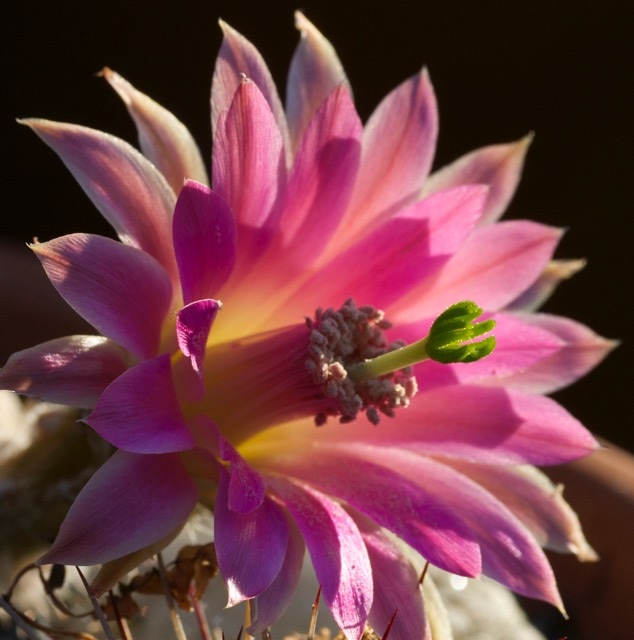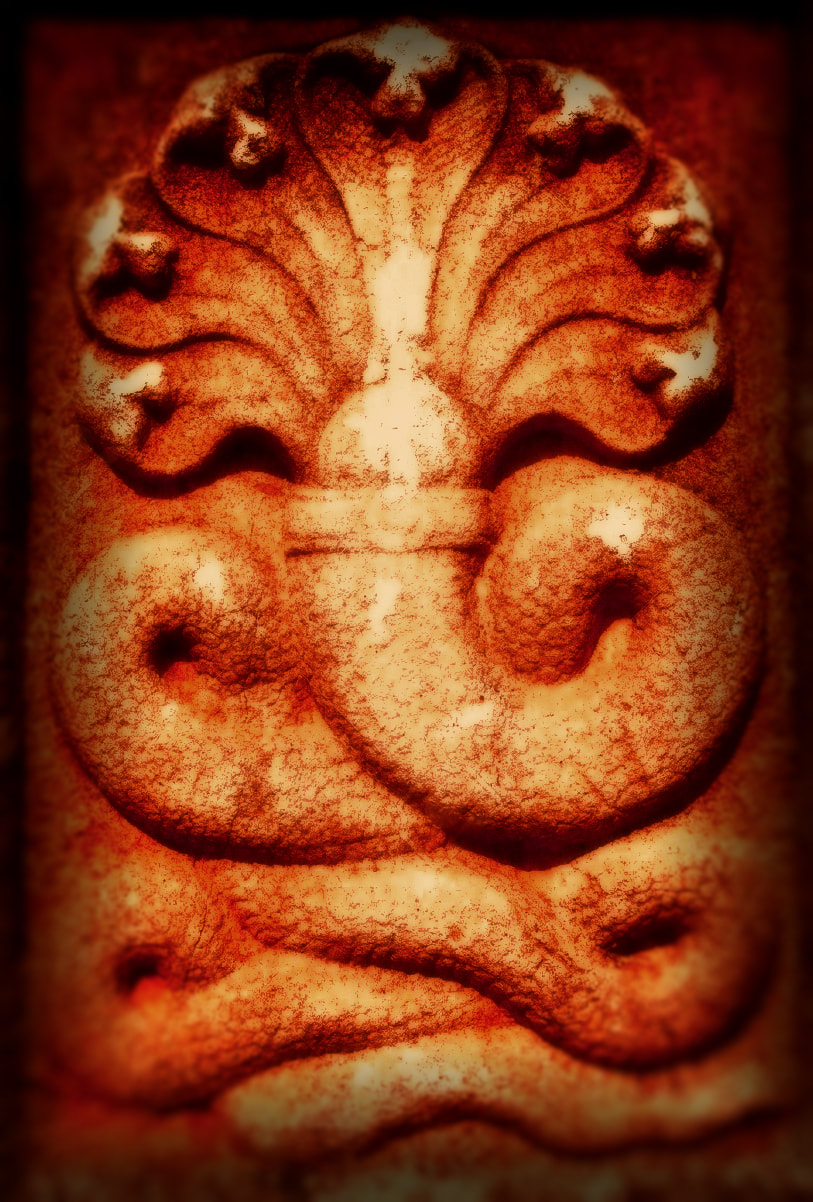| They're not amber, of course, despite a lot of insistence to the contrary by people who should know better. These particular beads are catalin, a slightly translucent and marbled form of bakelite, which is a phenolic plastic formulated in the early 20th C, famed for its endless commercial, industrial and aesthetic applications and pumped out until it was superseded by the 'modern' plastics we know and loathe today, post-WW2. True organic amber looks, weighs, smells and feels so different to bakelite that their strictly superficial resemblance becomes clear when they are handled side by side. If you're in the market, it behoves you to familiarise yourself with both these materials and a few related substances before investing. There are tonnes of fake (often Chinese) modern resin out there and a lot of unscrupulous traders waiting to relieve you of your $$$ in exchange for it. Some dealers are genuinely ignorant of that but many are preying on your naivety. Be aware too that there are contemporary artists who repurpose old bakelite from dead stock blanks and parted-out radios etc, fashioning it into new pieces; that's a great use of a lovely material, but it does mean that not every awesome item out there is a vintage one, strictly speaking. You might not care and I don't, really. A cool thing is a cool thing, regardless of age. | A nice lady rushed out of a boutique about a month ago to stop me on the street and inform me that my 'beautiful red amber' was worth a fortune overseas and inquiring as to where I'd found it. As it was the gratification of a very long-standing ambition, I remember buying these glossy beauties like it was yesterday- at an auction. They were in the sale and I scored them for $50+ buyer premium, which was a stone cold bargain, even fifteen years ago. Good times. In the nineties American collectors on holiday in New Zealand bought up most if not all our early plastic and decent Victorian jewellery. Nowdays you'd be lucky to see a piece like this in a specialist vintage jewellers, let alone a general sale or charity shop, where they did once dwell. Temps perdu, etc. But it's also cool to actually get what you're paying for when it comes to old pieces. Here's a few of the tips I use to judge and ID early plastic. Perhaps most important is the disciplined banishment of wishful thinking. When you're panting over something on the internet, your wanting it to be vintage or bakelite won't make it so. Does the piece seem too good to be true? Then it probably is. The ground's been gone over pretty thoroughly by sharper eyes than yours or mine and these days you have to get really, really lucky to find something genuine that's fresh to the market. Sad but true. In my experience, large beads like this have almost always been shaped or at least finished on a lathe after being cut from long sausage blanks. Even strings on their original knotting can sport beads of slightly differing profiles and dimensions; this can also mean that the string has been shortened at some stage in the process of natural attrition. I don't find this objectionable but that's down to personal preference. |
Most early plastics have their own distinctive smell when rubbed and warmed between your hands (except lucite- that's plexiglas/acrylic which doesn't have a pronounced odour) so unless you're seriously olfactorily declined, there's no need to stick hot pins in the stuff or carry around testing chemicals etc. Bakelite/catalin smells of formaldehyde when warmed thusly; like a dentist's clinic or old paint solvents- vaguely sinister, sickly and old. (Don't let this put you off. It only arises with vigorous rubbing and not in the course of normal wear.) You shouldn't have to try too hard to raise it, though; if you're not getting the smell in less than say, ten seconds of rubbing and warming, be suspicious.
| Bakelite is hard but not that hard; see how I've strung it lazily with glass seed beads as spacers? Don't do that. The glass will eventually wear into the softer plastic. Get them knotted or find some spacers of a similar, nonreactive material. Speaking of reactivity- store your beads in a cool shady place away from anything that might degrade them like heat, sunlight, perfume and hair products. |
One of the most pleasing physical aspects of bakelite in my opinion is the distinctive sound the beads make as they clack against one another. They have a voice all their own and say kunk instead of the pissy little kink of lesser materials impacting each other. Bakelite is the bear of the vintage plastic kingdom. I wear it with pride.

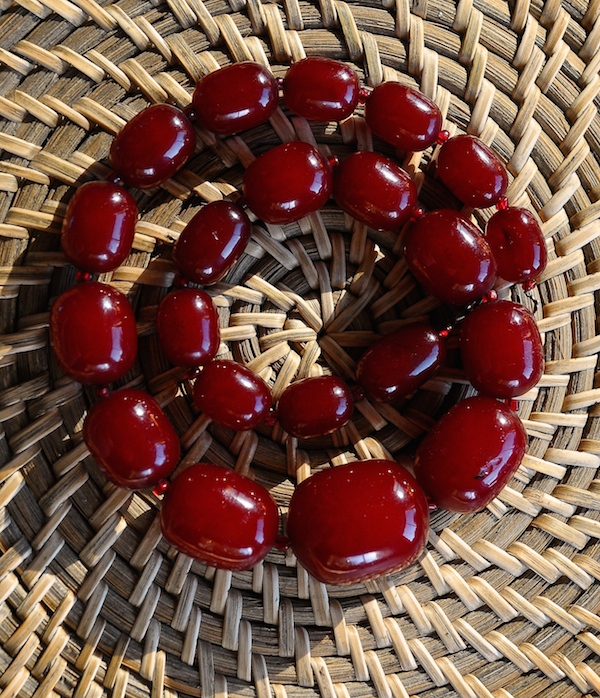



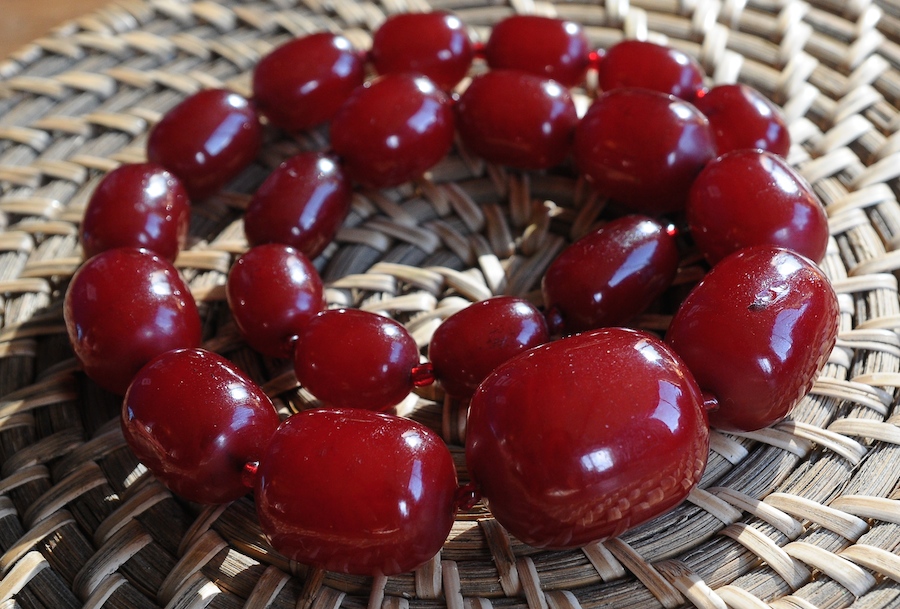
 RSS Feed
RSS Feed








